What is the deal with the embroidered, bejewelled outfits of 17.mai? Here's a brief explanation of the bunad – and what it means for us in Norway today
Every year on 17 May, Norway celebrates its national day, officially known as Constitution Day. There are lots of different ways to mark the occasion, but almost all involve wearing a bunad, a traditional folk costume.
Here in Norway, there are currently about 450 different varieties of bunad – yet the national costume as a whole symbolises unity. Each bunad is unique in looks, with a multitude of local and personal interpretations, but wearing a bunad conveys a sense of belonging. And on 17.mai, people of all ages, genders, and backgrounds can be seen in the dress.
Model Andrea Steen is one. “I am proud to represent Tinn and my family on 17.mai,” she says. “The Tinn bunad is adorned with rose embroidery sewn freehand. All the Tinn bunads are, therefore, one of a kind. My grandmother’s aunt embroidered my bunad.”
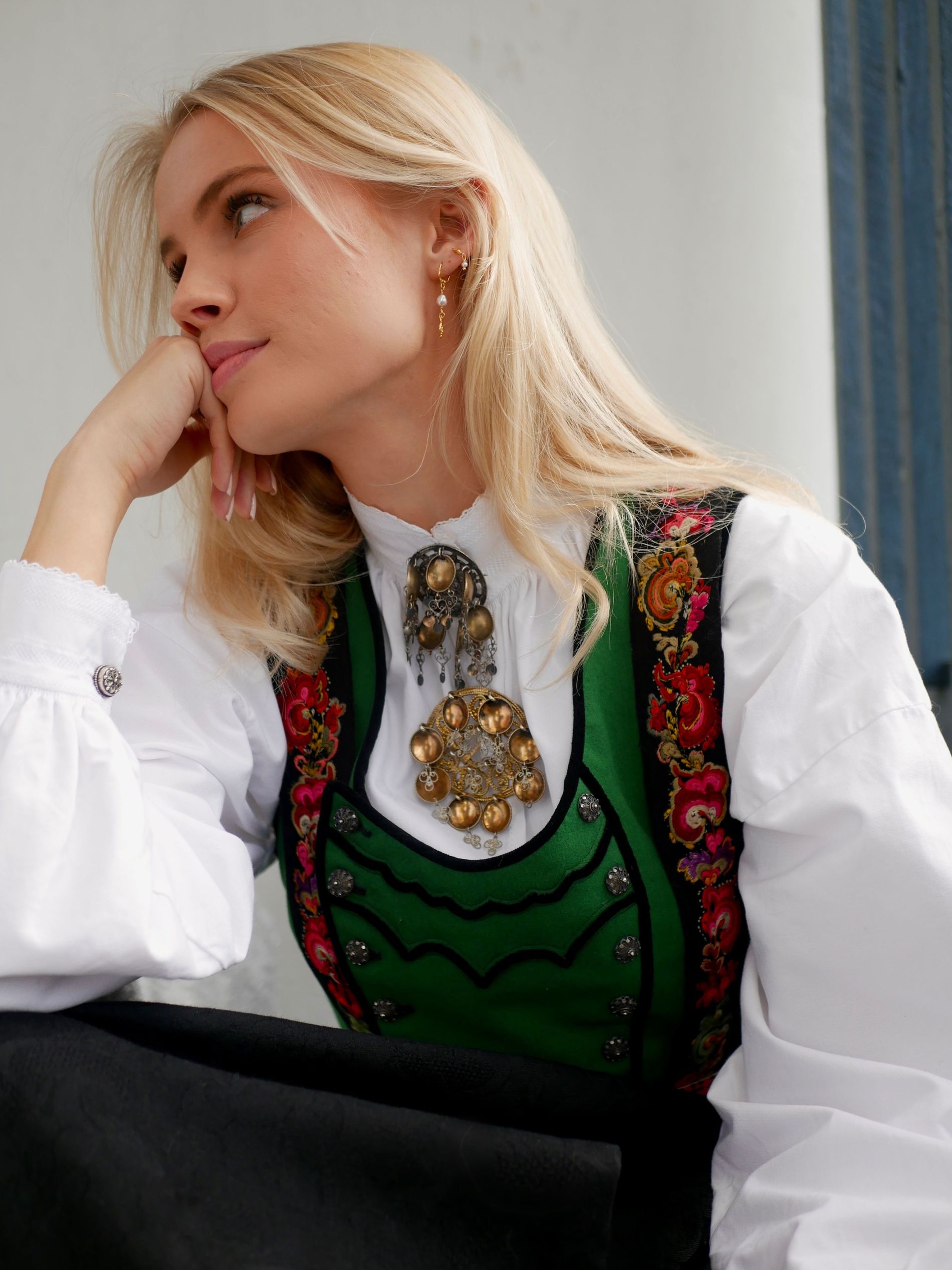
Andrea Steen in her Tinn bunad. Photo: Andrea Steen
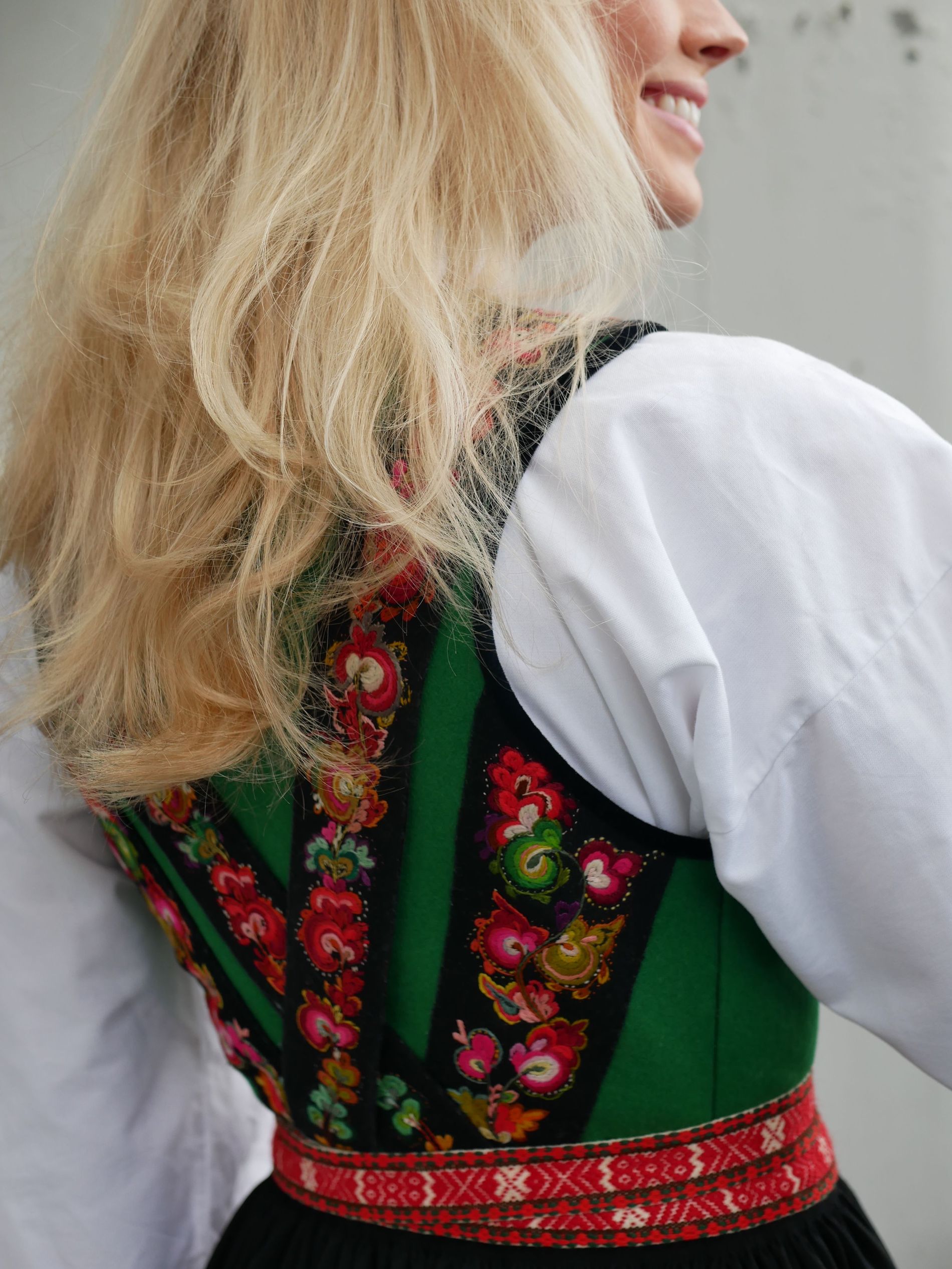
Photo: Andrea Steen
About 2.5 million bunads are now found in Norwegian homes, historian and podcaster Unni Irmelin Kvam estimates. A high number given that the country has 5.4 million habitants. Kvam tells Vogue Scandinavia, that the estimated value of these bunads is a total of 30 billion Norwegian kroner, the equivalent of over 3 billion euros.
This valuation in part reflects how each bunad consists of multiple elements such as wool and silk adorned with hand embroidery, weaving, lace, velvet, pearls, and jewellery. Brooches, hand-sewn shirts, headwear and shoes also accompany every bunad, making for a multi-layered look.
Yet the bunad, which is also often worn to grand celebrations such as christenings, graduations, confirmations, weddings and Christmas, offers more than economic value.
“The bunad is, for many Norwegians, the only garment they own that's been made to measure, sewn and fitted to their own body,” explains Kvam, who says it is arguably the Norwegian equivalent of couture. “It is designed to last for life.”
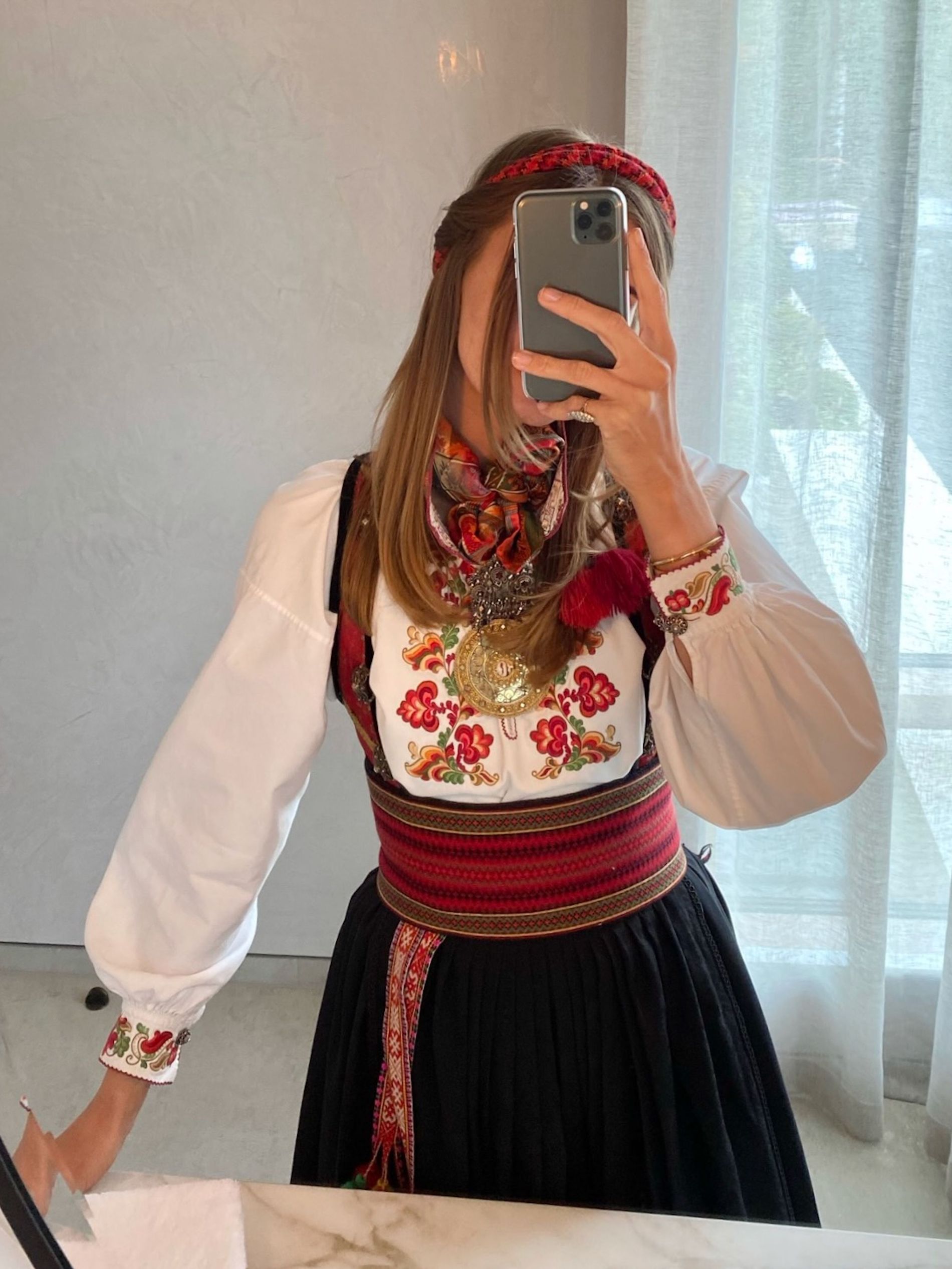
Rikke Sanvold in her bunad. Photo: Rikke Sanvold

Photo: Rikke Sandvold
Beyond the personal connection, there's often a familial one. The bunad is often a gift for confirmation at the age of 15 and in many families it is inherited from grandparents, fathers or mothers. “The idea is that the bunad should last a lifetime and pass on for several generations,” says Kvam.
To understand the bunad's historical significance, we need to go back over a century. In the 1890s, Norway struggled to become an independent nation. The country had long been under rule by its neighbours, Denmark and later Sweden. During the transition toward independence in 1905, the bunad became a symbol of national pride and of a unique identity separate to the countries that had ruled it.
“The Hardanger bunad was called The National,” explains Kvam. “It spread from the Hardanger region to all over the country as a symbol to favour independence.”
An early pioneer of the trend was Princess Maud of Wales, who was photographed in a Hardanger bunad when she visited Norway in 1893. After independence in 1905, Maud became queen of Norway and images of her in the bunad were spread to boost her reputation in the country. The current Crown Princess Mette-Marit of Norway has also been seen wearing a Hardanger bunad.

Queen Maud of Norway in her Hardanger bunad (Photo: Kraftmuseet). Today, the bunad is displayed at Norway's national gallery (Photo: Nasjonalmuseet).
Following Norway's independence, the bunad remained a symbol of patriotism. Writer Hulda Garborg played a significant role in the newly independent state's nation-building, with a mission to form and unite the Norwegian identity, language, and culture. Garborg travelled the country to preach these shared values - wearing a bunad. “Suddenly, everyone wanted one,” says Kvam. “She created a fashion trend, in many ways.”
Not only did Garborg help popularise the bunad, she also showed that it didn't need to remain rooted in tradition. Her own bunad was from the area of Hallingdal, but she gave it personal tweaks to suit a modern woman, a trend that continues to this day.
“We see that the bunads adapt to contemporary fashions and trends. For example, most bunads used to be much shorter,” says bunad seamstress Siri Sveen Haaland. “Foot side stacks [skirts] have become more common in modern times.” Haaland notes however, that “this trend has begun to reverse recently” as people have become increasingly preoccupied with recreating the national costumes in their original form.
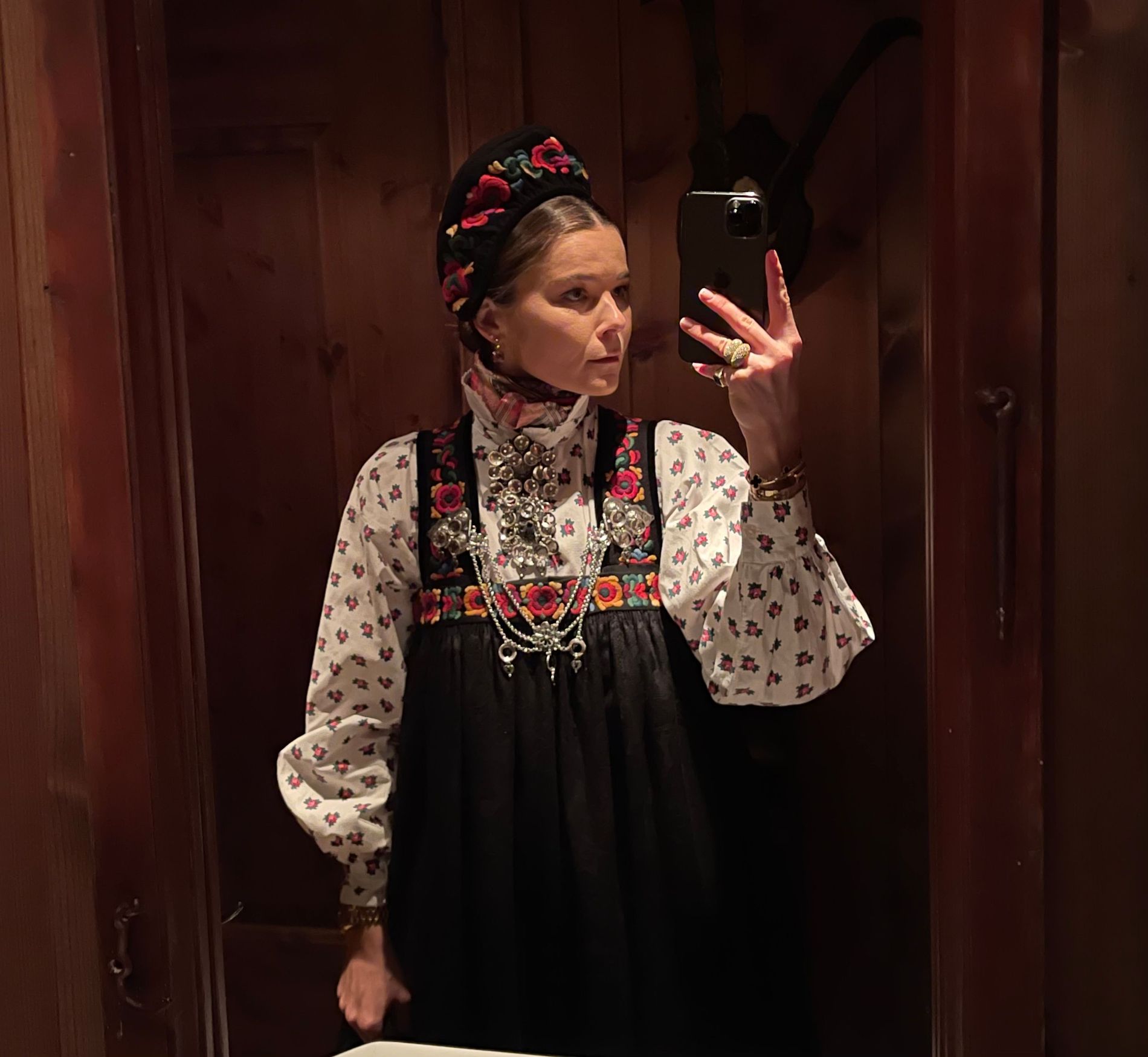
Model Rikke Krefting wearing a Hallingdal bunad. Photo: Rikke Krefting
From the 1920s onwards, most areas of Norway began to develop their own bunads, reflecting local traditions. After the Second World War, local identity became increasingly important and the bunad gained popularity. As the bunad trend evolved, extensive research was carried out in the 1960s and 1970s to collect and document traditional folk costumes.
The discovery of older bunad and folk costume traditions has since become the basis for reinventing the bunads that people wear today. “Most bunads are reconstructed and inspired by old craft techniques,” says Haaland.
Although there are a number of 'rules' (often the subject of considerable debate) around what does or does not constitute a bunad, one of the more interesting adjustments to the traditional costume in recent times has been to incorporate elements that reflect Norway's status as an increasingly multicultural country.
Similarly, the dress has become a way for those from other backgrounds to show their appreciation for Norwegian traditions. “My Vestfold bunad was a gift from my mother-in-law. I love it: the design, the colours, and the jewellery all tell a story about where it is from, and where my husband and his family come from,” says American model Amanda Hearst, who is married to a Norwegian.
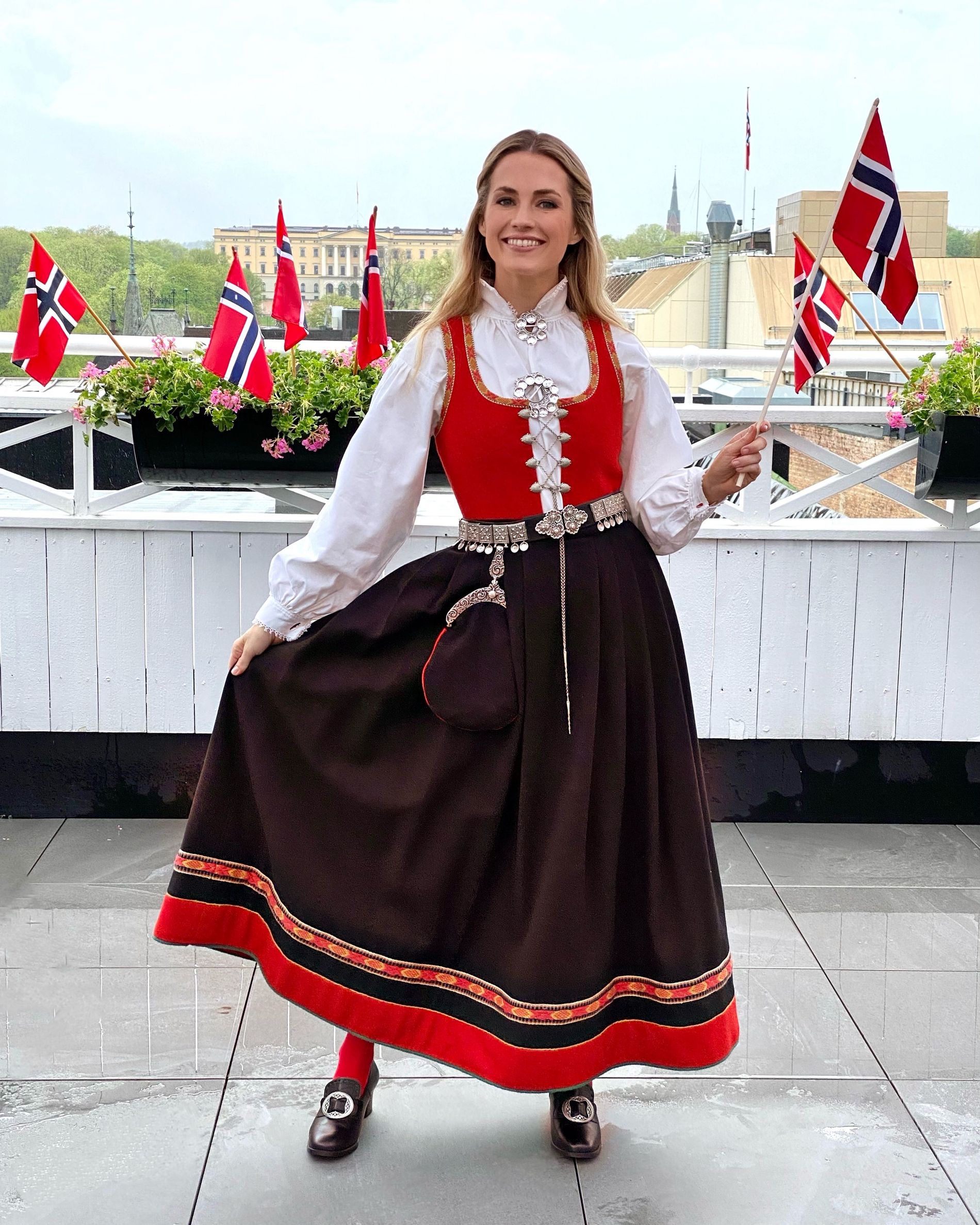
American Amanda Hearst in her Vestfold bunad. Photo: Amanda Hearst
Whilst other Nordic countries have their own versions of national costume, with the ones of Sweden and the Faroe Islands bearing some similarities to the Norwegian bunad, the prevalence of the bunad in Norway is considered unique. For most Norwegians today, the bunad is a beautiful, treasured outfit worn for generations, epitomising unity and grand celebrations.
With more than a century of history behind it, the bunad continues to evolve and adapt to modern tastes and styles. And it's unlikely to be giving up its status as a Norwegian wardrobe staple any time soon.
